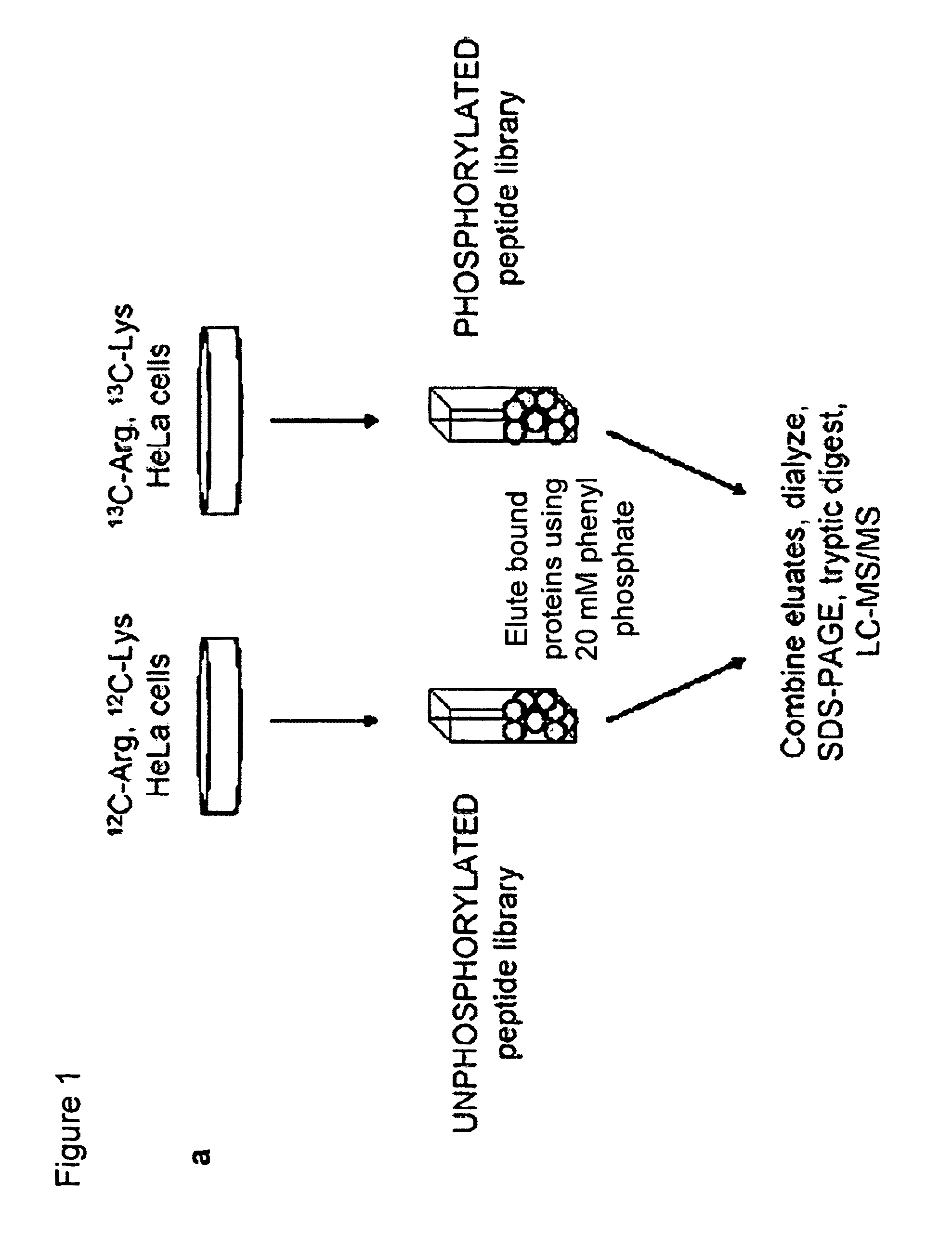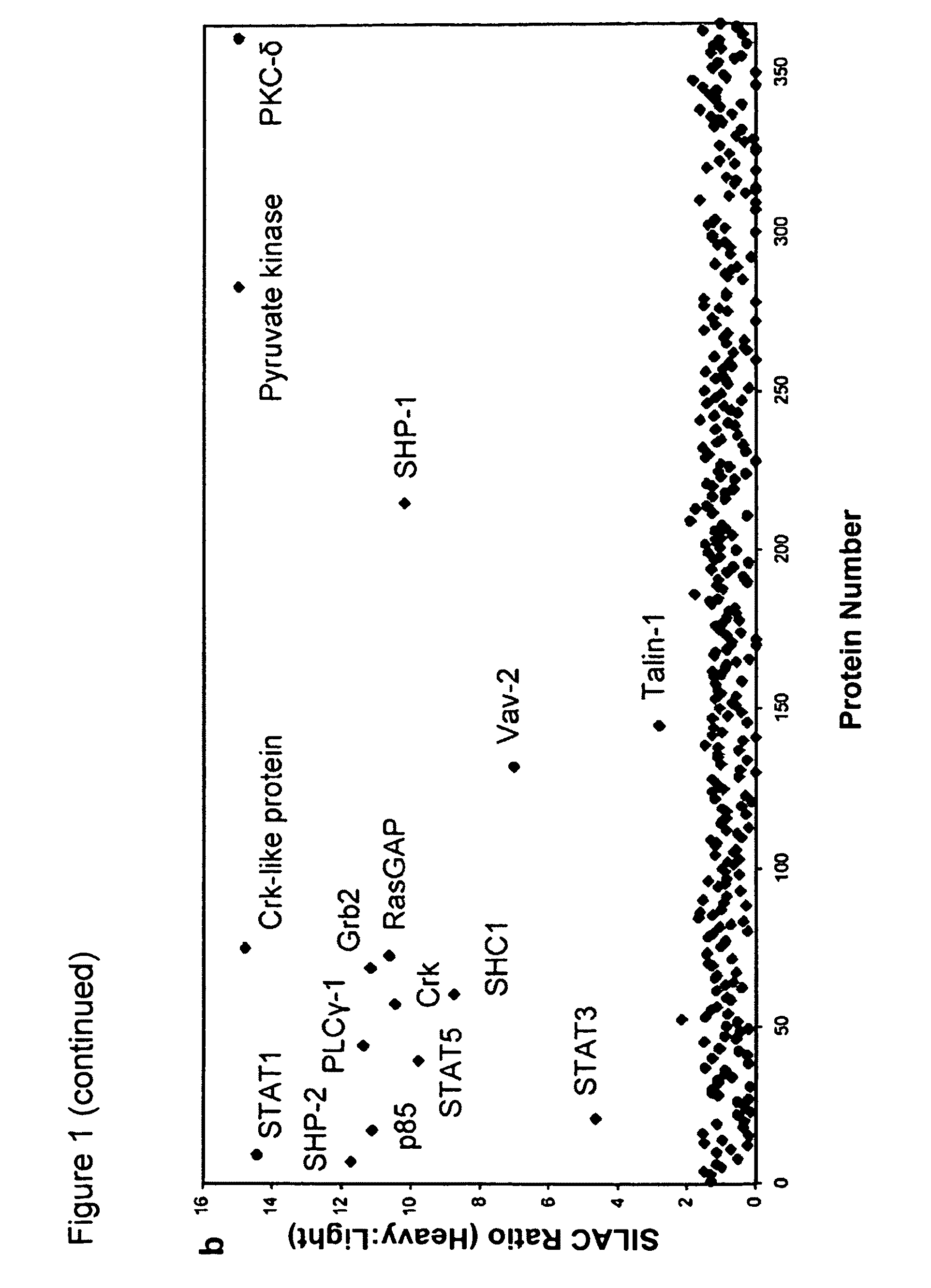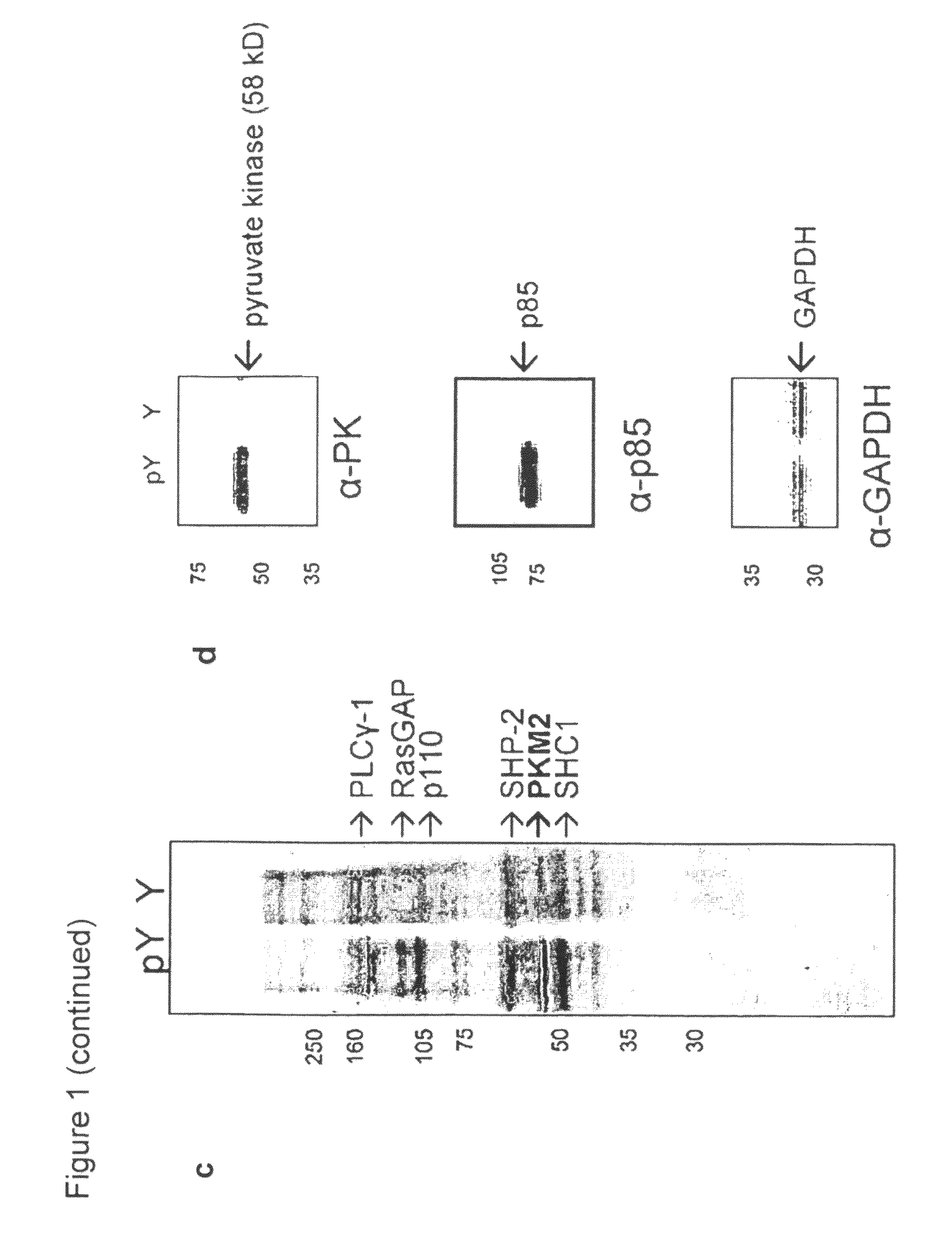Activators of pyruvate kinase M2 and methods of treating disease
a technology of pyruvate kinase and activators, which is applied in the direction of phosphorous compound active ingredients, drug compositions, peptide/protein ingredients, etc., can solve the problems that have not yet been exploited for therapeutic benefits, and achieve the effect of inhibiting the release of an activator, increasing the activity of pkm2, and reducing endogenous down-regulation of pkm
- Summary
- Abstract
- Description
- Claims
- Application Information
AI Technical Summary
Benefits of technology
Problems solved by technology
Method used
Image
Examples
example 1
Proteomic Screen Identifies Pyruvate Kinase as a Novel Phosphotyrosine Binding Protein
[0128]A phosphotyrosine peptide library (pY) and its unphosphorylated counterpart (Y) were constructed as follows: pY=biotinZ-Z-Gly-Gly-Gly-X-X-X-X-X-pTyr-X-X-X-X-X-Gly-Gly and Y=biotin-Z-Z-GlyGly-Gly-X-X-X-X-X-Tyr-X-X-X-X-X-Gly-Gly, where pTyr is phosphotyrosine, Z indicates aminohexanoic acid, and X denotes all amino acids except cysteine (Tufts Core Facility). Streptavidin beads (Amersham Biosciences) were incubated with a five-fold molar excess of each biotinylated library in TBST (50 mM Tris (pH 7.5), 150 mM NaCl, and 0.1% Tween) for 1 hour at 4° C. Peptide-conjugated beads were packed onto disposable 1-ml chromatography columns (Bio-Rad Laboratories) (250 pL beads / column) and were rapidly washed five times with TBST.
[0129]To identify novel phosphoTyr binding proteins from cell lysates, proteomic screening was used (FIG. 1a). Using SILAC (stable isotope labeling of amino acids in cell culture;...
example 2
Phosphopeptide Binding is Specific to the M2 Isoform of Pyruvate Kinase
[0134]Four pyruvate kinase isoforms exist in mammals: L (liver), R (red blood cell), M1 (adult), and M2 (embryonic / tumor) (Jurica et al., Structure 6: 195-210, 1998). The M1, M2, and L isoforms were transiently expressed as flag-tagged proteins in 293 cells, and lysates were flowed over the phosphoTyr and Tyr peptide affinity columns to assess binding. Eluates from the columns were analyzed by Western blot using a flag antibody, as described above (FIG. 2a). The M2 isoform is the only pyruvate kinase isoform that binds phosphoTyr peptides. PKM1 and PKM2 are identical proteins with the exception of a 56 amino acid stretch encoded by the alternatively-spliced region. Previous studies have shown that this stretch of amino acids comprises the only structural difference between the M1 and M2 isoforms and forms an allosteric pocket unique to PKM2 that allows for binding of its activator, FBP (Dombrauckas et al., Bioche...
example 3
Phosphotyrosine Peptide Catalyzes the Release of FBP from PKM2
[0142]To examine the effect of phosphoTyr peptide binding on FBP-bound PKM2, a peptide-binding motif for PKM2 was obtained using traditional peptide library screening. Both the phosphorylated (P-M2tide) and unphosphorylated (NP-M2tide) versions of the optimal peptide were synthesized: P-M2tide (GGAVDDDpYAQFANGG SEQ ID NO:1) and NP-M2tide (GGAVDDDYAQFANGG SEQ ID NO:2) (FIG. 5). The FBP-loaded recombinant PKM2 was incubated with P-M2tide or NP-M2tide, the unbound FBP and peptide were dialyzed away, and the counts retained on the PKM2 were measured. Exposure of PKM2 to the control NP-M2tide resulted in a significant amount of FBP remaining bound to PKM2. In contrast, exposure of PKM2 to the P-M2tide resulted in release of the majority of the FBP (FIG. 4e). These results indicate that phosphoTyr peptide binding catalyzes the release of FBP from PKM2.
[0143]Next, the ability of phosphoTyr protein binding to catalyze the release...
PUM
| Property | Measurement | Unit |
|---|---|---|
| distance | aaaaa | aaaaa |
| pH | aaaaa | aaaaa |
| flow rate | aaaaa | aaaaa |
Abstract
Description
Claims
Application Information
 Login to View More
Login to View More - R&D
- Intellectual Property
- Life Sciences
- Materials
- Tech Scout
- Unparalleled Data Quality
- Higher Quality Content
- 60% Fewer Hallucinations
Browse by: Latest US Patents, China's latest patents, Technical Efficacy Thesaurus, Application Domain, Technology Topic, Popular Technical Reports.
© 2025 PatSnap. All rights reserved.Legal|Privacy policy|Modern Slavery Act Transparency Statement|Sitemap|About US| Contact US: help@patsnap.com



